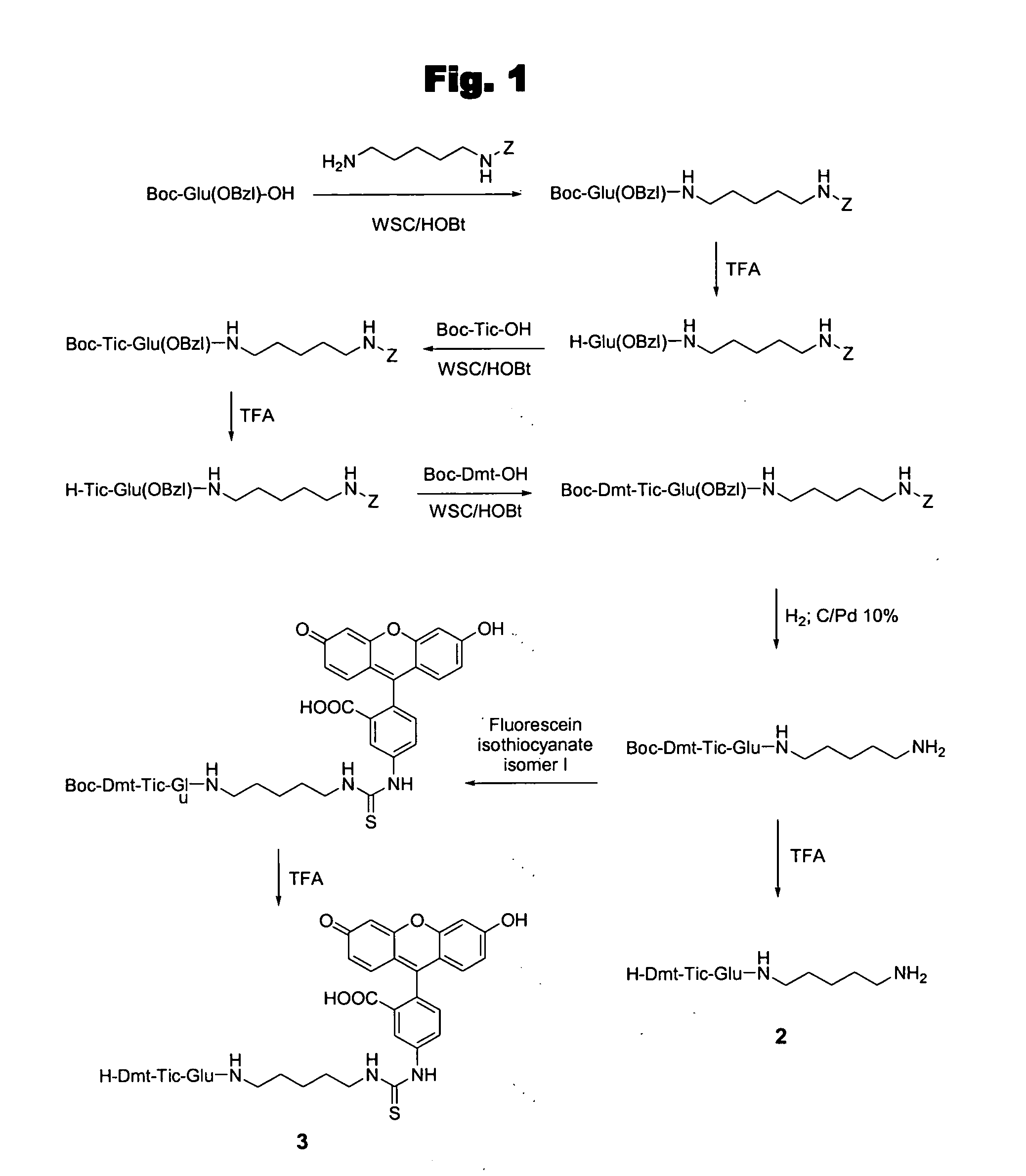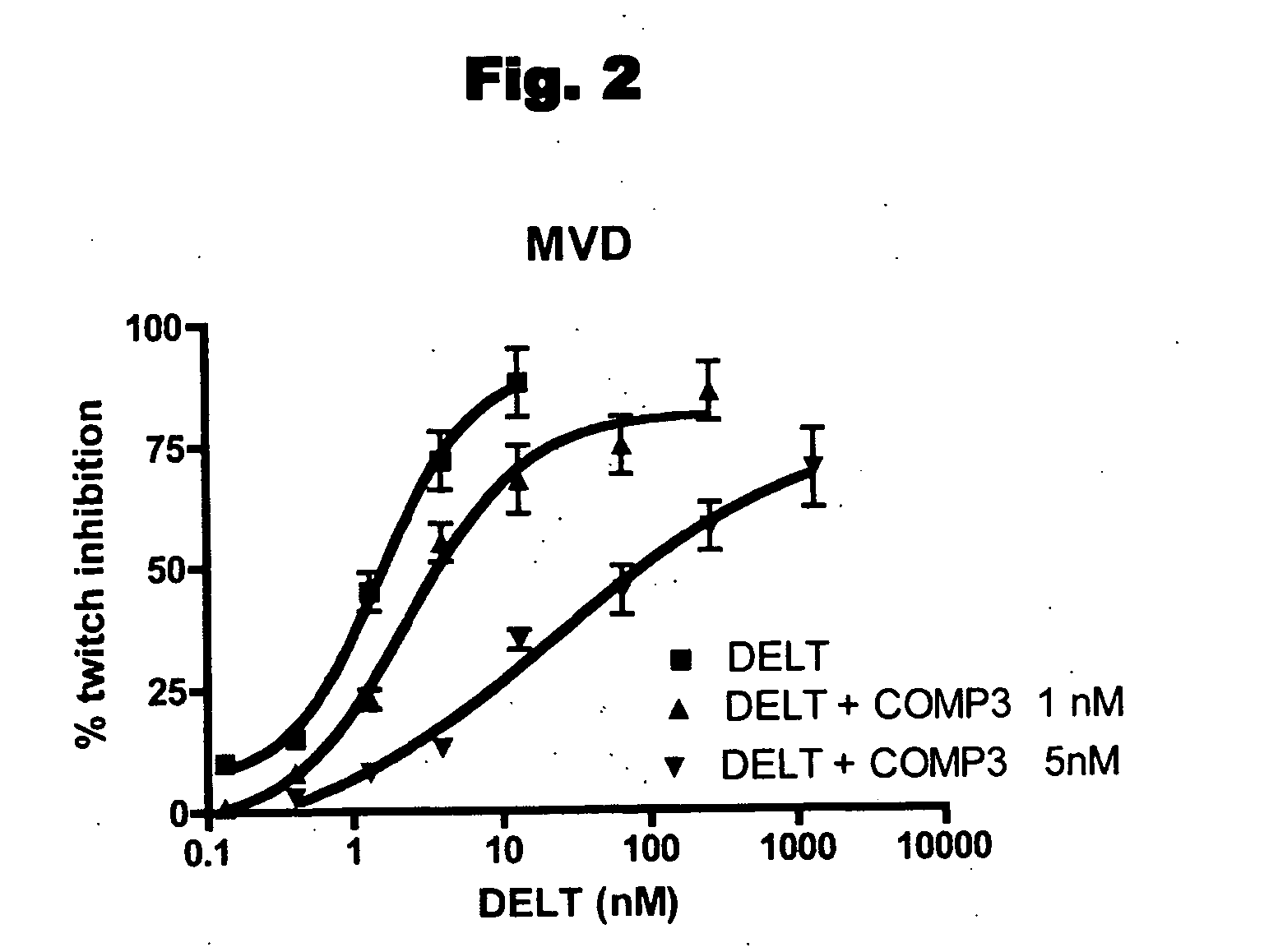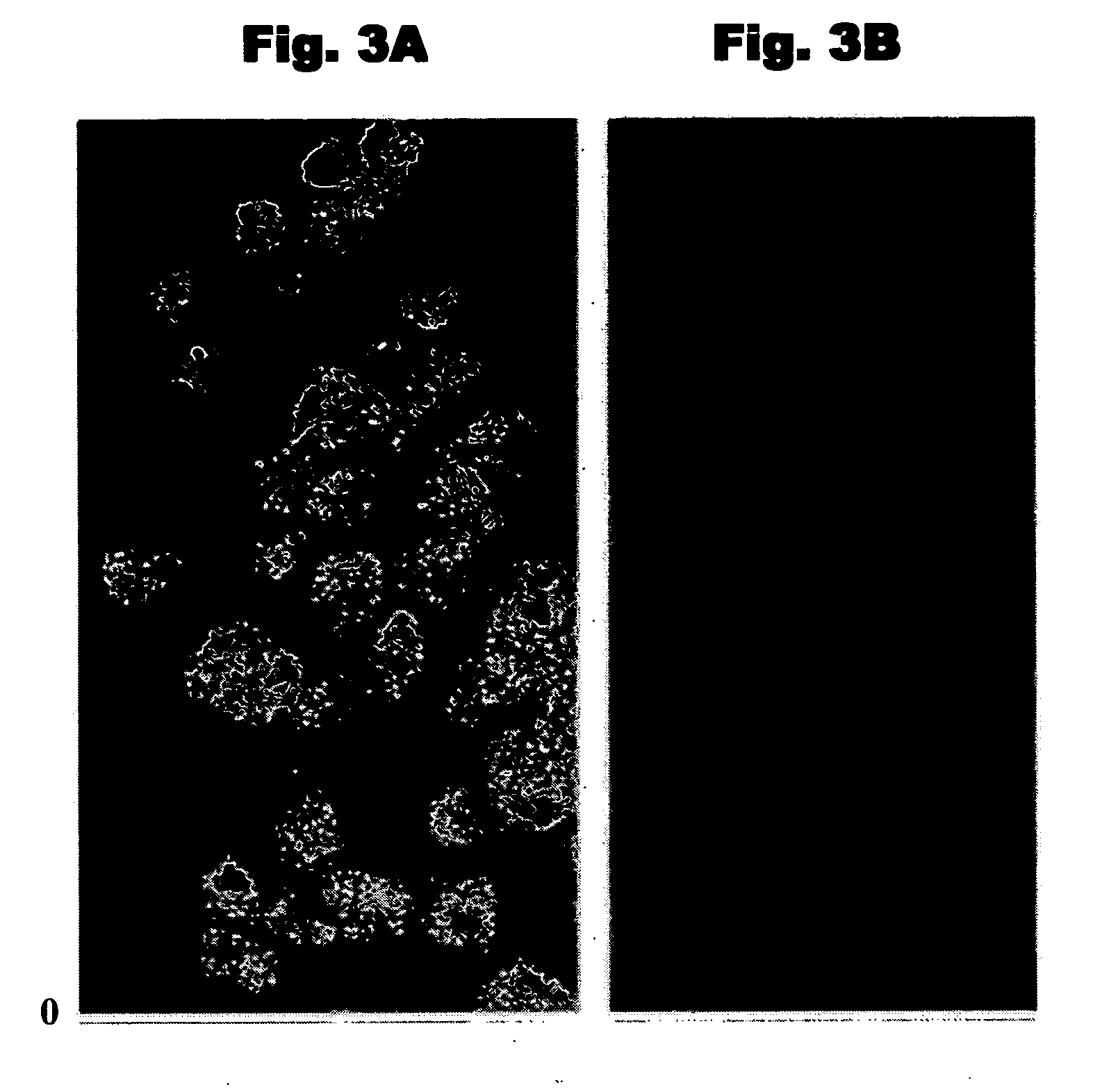Biologically potent analogues of the Dmt-Tic pharmacophore and methods of use
a pharmacophore and biologically potent technology, applied in the field of fluorescence peptide-based probes, can solve the problems of no molecular probes reported to be employed, nor their selectivity, and achieve the effect of improving the selectivity of the prob
- Summary
- Abstract
- Description
- Claims
- Application Information
AI Technical Summary
Benefits of technology
Problems solved by technology
Method used
Image
Examples
example 1
[0072] This example illustrates the peptide synthesis of Boc-Glu(OBzl)—NH(CH2)5—NH-Z.
[0073] To a solution of Boc-Glu(OBzl)—OH (0.30 g, 0.90 mmol) and N-Z-1,5-pentanediamine hydrochloride (0.24 g, 0.90 mmol) in DMF (10 mL) at 0° C. were added NMM (0.10 mL, 0.90 mmol), HOBt (0.15 g, 0.99 mmol) and WSC (0.19 g, 0.99 mmol). Z is the protecting group benzyloxycarbonyl. The reaction mixture was stirred for 3 h at 0° C. and for 24 h at room temperature. After DMF was evaporated, the residue was solubilized in EtOAc and washed with citric acid (10%), NaHCO3 (5%), and brine. The organic phase was dried and evaporated to dryness. The residue was crystallized from Et2O / Pe (1:9, v / v): yield 0.47 g (94%); Rf (B) 0.94; HPLC K′=9.15; mp 141-143° C.; [α]20D+20.4; MH+ 556; 1H NMR (DMSO) δ 1.29-1.55 (m, 15 H), 2.18-2.25 (m, 4H), 2.96-3.20 (m, 4H), 4.53-5.34 (m, 5H), 7.11-7.29 (m, 10H).
example 2
[0074] This example illustrates the peptide synthesis of TFA.H-Glu(OBzl)—NH(CH2)5—NH-Z.
[0075] Boc-Glu(OBzl)—NH(CH2)5—NH-Z (0.47 g, 0.85 mmol) was treated with TFA (2 mL) for 30 min. at room temperature. Et2O / Pe (1:5, v / v) were added to the solution until the product precipitated: yield 0.46 g (94%); Rf (A) 0.77; HPLC K′=6.89; mp 153-155° C.; [α]20D+23.9; MH+ 456.
example 3
[0076] This example illustrates the peptide synthesis of Boc-Tic-Glu(OBzl)—NH(CH2)5—NH-Z.
[0077] To a solution of Boc-Tic-OH (0.22 g, 0.80 mmol) and TFA.H-Glu(OBzl)—NH(CH2)5—NH-Z (0.46 g, 0.80 mmol) in DMF (10 mL) at 0° C. were added NMM (0.09 mL, 0.80 mmol), HOBt (0.13 g, 0.88 mmol) and WSC (0.17 g, 0.88 mmol). The reaction mixture was stirred for 3 h at 0° C. and for 24 h at room temperature. After DMF was evaporated, the residue was treated as reported above for Boc-Glu(OBzl)—NH(CH2)5—NH-Z: yield 0.51 g (89%); Rf (B) 0.95; HPLC K′=9.26; mp 143-145° C.; [α]20D+16.7; MH+ 615; 1H NMR (DMSO) δ 1.29-1.55 (m, 15 H), 2.18-2.25 (m, 4H), 2.96-3.20 (m, 6H), 4.22-5.34 (m, 8H), 6.96-7.19 (m, 14H).
PUM
| Property | Measurement | Unit |
|---|---|---|
| particle size | aaaaa | aaaaa |
| particle size | aaaaa | aaaaa |
| particle size | aaaaa | aaaaa |
Abstract
Description
Claims
Application Information
 Login to View More
Login to View More - R&D
- Intellectual Property
- Life Sciences
- Materials
- Tech Scout
- Unparalleled Data Quality
- Higher Quality Content
- 60% Fewer Hallucinations
Browse by: Latest US Patents, China's latest patents, Technical Efficacy Thesaurus, Application Domain, Technology Topic, Popular Technical Reports.
© 2025 PatSnap. All rights reserved.Legal|Privacy policy|Modern Slavery Act Transparency Statement|Sitemap|About US| Contact US: help@patsnap.com



